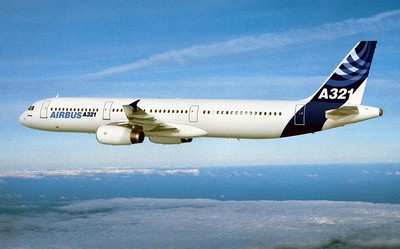Mon, May 07, 2018
System Limits Available Oxygen In Fuel Tanks To Comply With Fuel Tank Flammability Reduction Rule
The FAA has issued a STC to AerSale for installation of its AerSafe system on Airbus A321 aircraft (ST04010NY) in compliance with the Fuel Tank Flammability Reduction (FTFR) rule. EASA has also approved AerSafe on A321 aircraft (10065226) as a Flammability Reduction System (FRS).

This new STC is in addition to AerSale’s STCs for the Boeing 767 series (ST03599NY), approved by the FAA in February 2018, as well as the Boeing 737 CL series (ST03589NY) and the Boeing 737 NG series (ST02980NY), both approved in 2016.
“Obtaining approval from both the FAA and EASA shows AerSafe should be a key consideration for complying with the FTFR rule,” said Iso Nezaj, Chief Technical Officer at AerSale. “With AerSafe’s substantial cost savings and additional maintenance-friendly benefits, nitrogen inerting systems simply cannot compare. AerSafe is available in less than six weeks, installs in two days, has no mechanical parts to fail, and once installed, is maintenance-free. Airlines and operators faced with retrofitting a single aircraft or an entire fleet will realize significant benefits."
Tested and developed to exact tolerances to fill the cavity of the A321 center fuel tanks, AerSafe limits the amount of available oxygen that can ignite fuel vapors and prevents sparks from igniting an explosion. AerSafe comes as a complete prefabricated kit that can be installed at any hangar around the world. After initial installation, the system requires no maintenance or spare parts. A limited number of AerSafe kits are currently available for immediate installation. For larger orders, the lead time for ordering AerSafe is currently 60 days versus the one-year lead time for the nitrogen inerting system.
The FAA enacted the FTFR rule after the crash of TWA flight 800 off the coast of New York. Federal investigations revealed that the accident was the result of an explosion caused by a spark igniting fumes in the center fuel tank of the Boeing 747. The FTFR rule requires fuel tank ignition sources and flammability exposure to be reduced in aircraft most at risk. The FAA gave two options: a flammability reduction means such as nitrogen inerting, or an ignition mitigation means such as AerSafe. These systems must be installed on all passenger aircraft that have high flammability fuel tanks and fly within or into the United States.
(Source: AerSale news release. Image from file)
More News
Light Gun A handheld directional light signaling device which emits a brilliant narrow beam of white, green, or red light as selected by the tower controller. The color and type of>[...]
“We have performed extensive ground testing by comparing warm up times, full power tethered pulls, and overall temperatures in 100 degree environments against other aircraft >[...]
While Taxiing To Parking The Right Landing Gear Leg Collapsed, Resulting In Substantial Damage Analysis: The pilot made a normal approach with full flaps and landed on the runway. >[...]
From 2014 (YouTube Edition): Exotic Rebuild Reveals Aerial Work Of Art During EAA AirVenture 2014, ANN's Michael Maya Charles took the time to get a history lesson about a great ai>[...]
Also: Project Talon, McFarlane Acquisition, Sky-Tec Service, JPL Earth Helo Tests Bombardier has earned a round of applause from the business aviation community, celebrating the fo>[...]
 ANN's Daily Aero-Term (12.13.25): Light Gun
ANN's Daily Aero-Term (12.13.25): Light Gun Aero-News: Quote of the Day (12.13.25)
Aero-News: Quote of the Day (12.13.25) NTSB Final Report: Gippsland GA-8
NTSB Final Report: Gippsland GA-8 Classic Aero-TV: Historically Unique -- Marlin Horst's Exquisite Fairchild 71
Classic Aero-TV: Historically Unique -- Marlin Horst's Exquisite Fairchild 71 Airborne 12.12.25: Global 8000, Korea Pilot Honors, AV-30 Update
Airborne 12.12.25: Global 8000, Korea Pilot Honors, AV-30 Update



